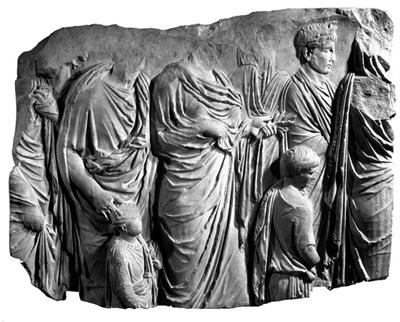January 2008 (112.1)
Article
Pledges of Empire: The Ara Pacis and the Donations of Rome
By Diana E.E. Kleiner and Bridget Buxton
The Ara Pacis presents the most important surviving programmatic statement of the middle years of the Augustan principate. Recent scholarship has focused on the identity and significance of the altar’s children, but progress has been constrained by assumptions about Augustus’ dynastic ambitions. The altar reflects the political realities and ideals of the year 13 B.C.E., when adult generals were in ascendance, foreign children took center stage, and the political prospects of Gaius and Lucius Caesar were still uncertain. Three figures are identified here as foreign princes associated with elite Julio-Claudian children as the “pledges of empire” guaranteeing Rome’s global hegemony. This message was understood in the context of such familiar Roman rituals as the triumph and supplicatio, but its presence on the altar also responded to and appropriated Eastern ceremonies and the art that memorialized them in Cleopatra’s Egypt and elsewhere. Augustus recast the empire as the “Donations of Rome” in response to Mark Antony’s Donations of Alexandria, both men invoking Alexander’s vision of an empire of the oikoumene. The Ara Pacis features child pledges connoting the three continents, and, along with their Roman peers, advertises Augustus’ claim to be world conqueror.
